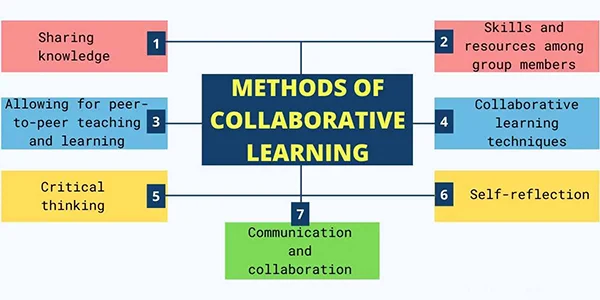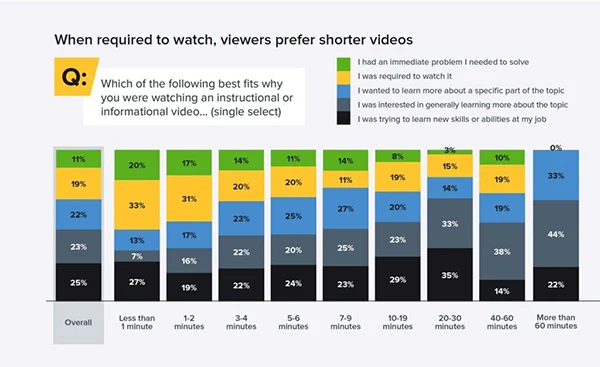
The use of videos for learning is the most accessible solution nowadays. This has been around for decades now. Since sources for learning are readily available these days, educators are open to using them in a more integrated way.
Besides, it is seen that new teachers need help finding ways for students to access course content. In that case, video clips can help them to amplify their curriculum.
Education researcher Pauline Gibbons says “Rather than trying to simplify information, amplifying the curriculum means finding as many ways as possible to make key information comprehensible”.
From traditional lectures to facilitating collaborative projects, conventional teaching methods result in enriching learning experiences.
Here, in this guide, you can expect to see 5 ways teachers can utilize videos for learning in the classroom.
Enhancing Lectures and Presentations
In particular, learning is enhanced by two main channels of memory acquisition i.e. auditory and visual. Video clips can be harnessed to improve what is known as cognitive load.
Otherwise, you can also try including relevant clips at a strategic point when assembling a lecture. It is believed that when video and talking methods are combined students learn faster than in traditional ways.
Here is how to enhance lectures and presentations:
- Slide-Based Lecture: These lectures usually consist of the presenter using slides to deliver the content and are ideal for visual learners.
Do You Know?:
A study conducted by software company Kaltura in 2022 concluded that 97% of education professionals consider video essential to students’ academic experiences.
- Animated Lecture: Animation is in trend nowadays. Animated lectures are perfect when teachers are looking for something more engaging. It includes various forms of animation like 2D or 3D graphics, illustrations, or cartoons.
In essence, interactive video content promotes active participation. Interactivity like pause, rewind, and replay segments allows students to immerse in the video content.
Reinforcing Learning Concepts
Where observational data is present, it reinforces learning concepts. In fact, studies have shown that short video clips allow for more efficient processing and memory recall.
Are you wondering why videos reinforce learning concepts? To answer, because of its visual and auditory nature. This ultimately appeals to a wide audience.
In simple words, it makes it easy for viewers to process information in a way that’s natural to them. The benefits are not only bound to students but also benefit teachers, their affiliated institutions, and the entire school system.
Even, the content presented in multiple formats caters to varied learning styles.
What else? The asynchronous nature of videos allows them to be shared all across the world, meaning at any time irrespective of day or night. Institutions are gaining autonomy by using videos to reach a broader audience than ever before.
Fostering Collaboration and Discussion

By watching and analyzing footage, some students may be keen to discuss and collaborate with others for suggestions and support. The collaboration builds trust, creates a sense of community, and promotes speedy growth and improvement.
For instance,
Let’s say a teacher has assigned a group of 4 students to work on a project and create a presentation accordingly. In such a case scenario, students are open to interacting, discussing things, researching together, and learning something new whenever working together.
Video presentations and debates elevate them to articulate their ideas, participate in constructive dialogue, and build confidence in public speaking.
Catering to Diverse Learning Styles
Having said that, learning with videos has proven effective, engaging, and attention-grabbing for several reasons. Yet another perk is it caters to diverse learning styles since it is appealing to the eyes, ears, and brain.
Multiple modes of information delivery like auditory, visual, and sometimes kinesthetic elements help educators to cater to the diverse educational needs of students.

Statistics:
Regarding video length preferences, there’s a “Goldilocks length”— not too short, and not too long.
In the most recent study, the majority of viewers prefer instructional and informational videos in the ranges of 3-4 and 5–6 minutes, not more than that.
Clips inclusive of captioning and subtitles amplify accessibility for students with hearing impairments or those who prefer reading along.
Concerning gaming scalability, informative content should be uploaded on social media platforms in different formats. For example YouTube shots, Instagram reels, Twitter posts, etc.
Editing Videos for Customized Learning Experiences
To get rid of the burden of finding current, legal, and engaging videos to share, educators may create some. It not only delivers the required information but also increases their digital literacy skills.
For that, integrating an online video editor can simplify the task. Educators can take advantage of features like adding text overlays, interactive elements, 2D animations, voice-overs, subtitles, and more.
Fast Fact:
A survey reveals that 83% of respondents prefer watching video to accessing information or instructional content via text or audio.
For further amendments, educators can modify the content to align with curriculum objectives.
Fundamentally, video editors can be employed to assemble personalized learning clips that resonate with students.
Conclusion
With the prevalence of modern digital technology, the usage of video for learning is a valuable asset for educators out there since it has totally shaped the picture of classroom instructions.
A clip can have a big impact, so teachers are in charge of picking or editing the most dynamic resources like documentaries, informative animations, news segments, etc.
The application of these ways makes students fully immersed in what’s in front of them on the screen and don’t just passively watch the video.
Just be strategic and ensure students are able to successfully process and absorb what they are watching.
Also Read: Oceanofpdf & Its 12 Alternatives